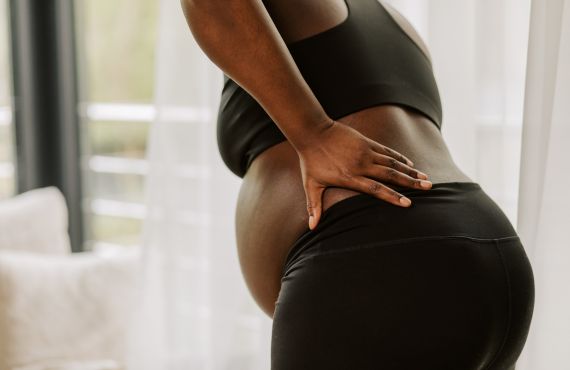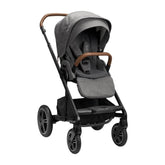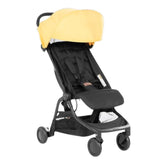How to Manage Second Trimester Aches and Pains

Pregnancy is a time of immense change, excitement, and preparation. However, it also brings physical challenges, especially during the second trimester. While many people expect some discomfort as the body adapts to accommodate a growing baby, persistent or intense aches and pains can interfere with daily life. Understanding these changes and knowing how to manage them is essential for your well-being and peace of mind. In this ANB Baby guide, we'll explore practical solutions for managing aches and pains during the second trimester and address important symptoms that should not be ignored. Let's make your pregnancy journey as comfortable as possible!
Understanding Second Trimester Aches and Pains
The second trimester, typically spanning weeks 13 to 26 of pregnancy, is often referred to as the "golden period." Morning sickness usually subsides, and energy levels increase. However, as the baby grows, the body undergoes significant changes that can lead to discomfort, including whole-body pain during pregnancy's second trimester.
How to Stop Body Aches While Pregnant
Body aches during pregnancy are common due to hormonal shifts and the physical strain of carrying a baby. Here are some proven methods to alleviate them:
- Stay Active and Stretch: Gentle exercises like prenatal yoga, swimming, or walking can improve circulation and reduce stiffness. Incorporating light stretches into your daily routine can also alleviate muscle tension.
- Prioritize Rest and Proper Posture: The added weight of pregnancy can strain your back and joints. Use a pregnancy pillow to support your body while sleeping on your side. Proper posture when sitting or standing can also prevent unnecessary pain.
- Use Heat and Cold Therapy: Applying a warm compress to sore muscles or taking a warm (not hot) bath can ease aches. For acute pain, a cold pack can reduce inflammation and provide relief.

Stomach Pain During Pregnancy in the 2nd Trimester
Abdominal discomfort during the second trimester is often due to stretching ligaments, gas, or constipation. However, certain symptoms warrant closer attention.
Managing Round Ligament Pain
Round ligament pain—a sharp, jabbing sensation on one or both sides of the abdomen—is common as the uterus grows. To manage this:
- Avoid sudden movements that strain the ligaments.
- Wear a maternity support belt for added stability.
- Rest in a comfortable position when the pain strikes.
When to Contact Your Provider
Sharp or persistent stomach pain could signal issues like kidney stones or preterm labor. Always consult your provider if abdominal pain is severe or accompanied by other symptoms.

How to Relieve Breast Pain During Pregnancy in the Second Trimester
Breast tenderness often extends into the second trimester due to hormonal changes and milk duct development. To relieve discomfort:
- Wear a supportive, well-fitting maternity bra.
- Apply warm compresses or take warm showers.
- Use lanolin cream to soothe sensitive nipples.

Mama Mio Keep Calm Nipple Balm, 30 ml
What Symptoms Should Not Be Ignored During Pregnancy
While aches and pains are common, some symptoms may indicate complications. Knowing the danger signs of pregnancy in the second trimester is vital for you and your baby's health.
Danger Signs to Watch For During Pregnancy
- Persistent abdominal pain or cramping.
- Severe back pain that doesn't subside.
- Flu-like body aches accompanied by fever.
- Sudden swelling in the hands, feet, or face.
- Vaginal bleeding or fluid leakage.
If you experience any of these, seek immediate medical attention.

How to Manage Chronic Pain in Pregnancy
For some, pregnancy may exacerbate pre-existing chronic pain conditions. Effective pain management strategies include:
- Work Closely with Your Healthcare Provider: Discuss safe medications or physical therapy options tailored to your needs. Avoid over-the-counter pain relievers without professional guidance.
- Explore Holistic Therapies: Prenatal massages, acupuncture, and meditation are natural ways to manage chronic pain safely during pregnancy (Medical News Today).

Flu-Like Body Aches During Pregnancy
Body aches resembling flu symptoms can occur due to hormonal fluctuations or immune system changes. These aches are typically harmless but can cause concern, especially if they're present in early pregnancy or the second trimester. If flu-like body aches are accompanied by fever, chills, or persistent fatigue, consult your provider. These could indicate an infection or other underlying issue.
Whole Body Pain During Pregnancy Second Trimester
Generalized body pain is often due to weight gain, hormonal changes, or posture adjustments. Common areas affected include the back, hips, and legs.
How to Alleviate Whole Body Pain During Pregnancy
- Take frequent breaks to stretch if sitting or standing for long periods.
- Sleep with a pillow between your knees to support your hips.
- Wear comfortable, supportive footwear to reduce pressure on your lower body.
Embracing a More Comfortable Pregnancy With ANB Baby
While aches and pains are a natural part of pregnancy, proactive measures can help you manage them effectively. From gentle exercises to supportive maternity products, there are numerous ways to ease discomfort and focus on the joy of your journey. Remember, it's crucial to communicate openly with your healthcare provider about any concerning symptoms. For all your pregnancy and parenting needs, visit ANB Baby online or in-store for a curated selection of products designed to make every stage, from pregnancy to the toddler years, as seamless and enjoyable as possible.









